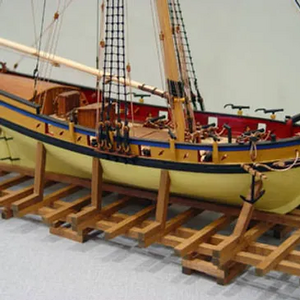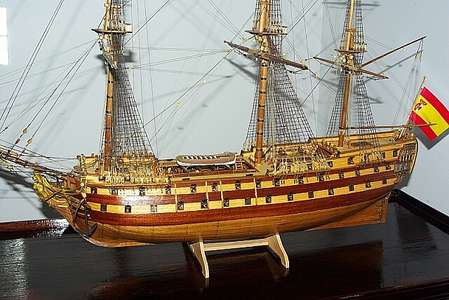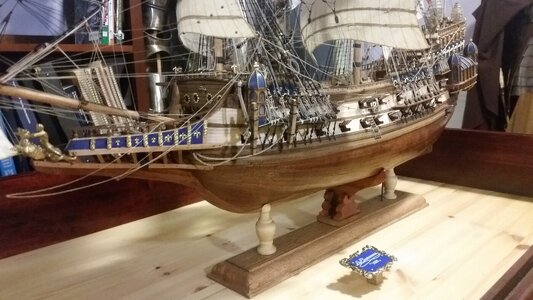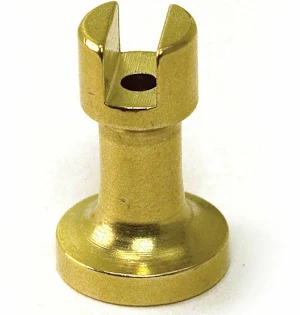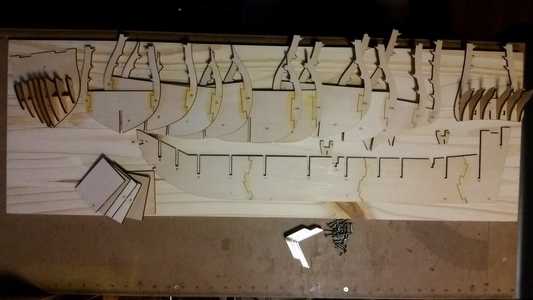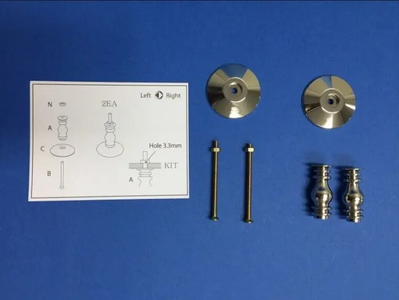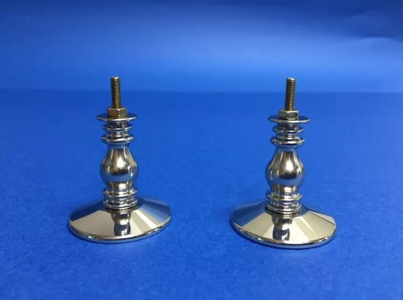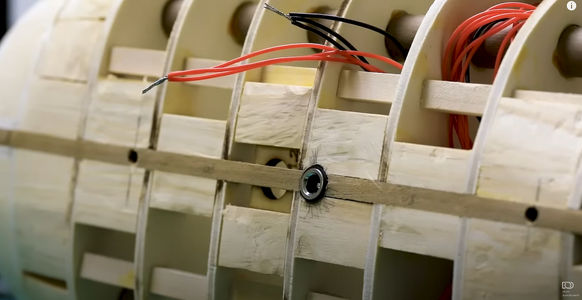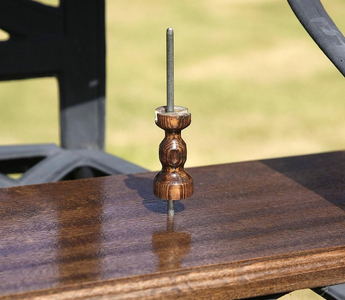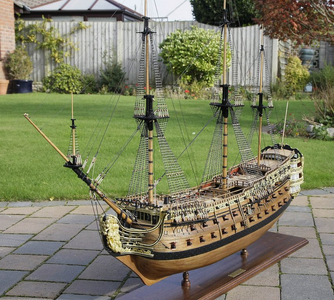The subject of how to mount a ship model has come up several times in forums, but a comprehensive guide on the various ways to mount a model is something you don't see in modeling books or forums. Most builders figure out a method for themselves, and a few kits do have instructions in how to mount their model built into the steps of their instructions.
I will try to describe a couple of the ways modelers make ship mountings.
Typically, a model will be supported in four different ways. The first, and least used, is with supports that are similar to supports used in a shipyard, consisting of number of stilts holding up the hull.
The first, and least common, is the use of multiple supports, often simulating those used in a shipyard to support a hull during construction. This is often used in drydock dioramas.
View attachment 450978
The second is using cradles or saddles, either mounted to a baseboard or as part of a stand assembly.
View attachment 450979
The third is using a combination of pedestals and cradle to offer lateral support for the model.
View attachment 450980
The fourth, and most traditional method, is the use of pedestals. This is the method I will go into some detail on. The pedestals often have notches where the keel resides. These are not sufficient by themselves to hold the model upright. If used without further support, there is great danger snapping off the keel or break off parts of it should the model be bumped from the side, If the model is heavy, the weight of the hull itself may be enough to cause this damage to occur, and it doesn't matter how tight the keel fits in the notches. The model will want to lean over to one side or the other.
View attachment 450986
You need to plan how to mount the pedestals right from the beginning, at this stage in construction.
View attachment 450981
A pedestal assembly usually includes a treaded rod or screw which passes through the pedestal, and up into the hull, where it engages an internally threaded fastener, typically a nut. In the instructions below, the pedestal nut simply rests on the inside surface for a plastic ship model. For a wooden model there is more to be done, as will be explained.
View attachment 450982
View attachment 450983
Below is a picture of Ohla Batchvarov's model of a Ragusan carrack. Note all the solid wood around the holes in the keel for strength. You can see two holes in the keel where the threaded rods or screws will pass through the pedestals and into the hull, plus and electrical socket between them which is used to power the internal lights. What you can't see are the two nuts higher up inside the hull which are encapsulated on all sides with solid wood about 3-5 cm above the keel. The higher the nuts are mounted in the hull and the longer the threaded rod, the more support is provided. These metal nuts accept the threaded rod or machine screws. The nuts are glued into solid wood so they cannot come loose or rotate. The threaded rod or screws are inserted through the baseboard, pedestals, and into the model and are tightened from underneath the baseboard.
View attachment 450984
An alternative to using threaded rods or screws is the use of very long rods which are full supported by sold wood and reach high up into the hull. These have the advantage of allowing you to lift the model off the baseplate without having to unscrew any fasteners. Ken3335 on the Model Ship World Forum used this technique on his model of
HMS Royal William below. The model relies solely on the rods and the internal blocks firmly attached to the hull structure to support the model.
View attachment 450985
View attachment 450989
Hope this quick little tutorial helps. If your model is too far along to allow for proper internal support blocks and hardware for the use of pedestals, you will have to use cradles or a combination of cradle and pedestals to proper support the model.




